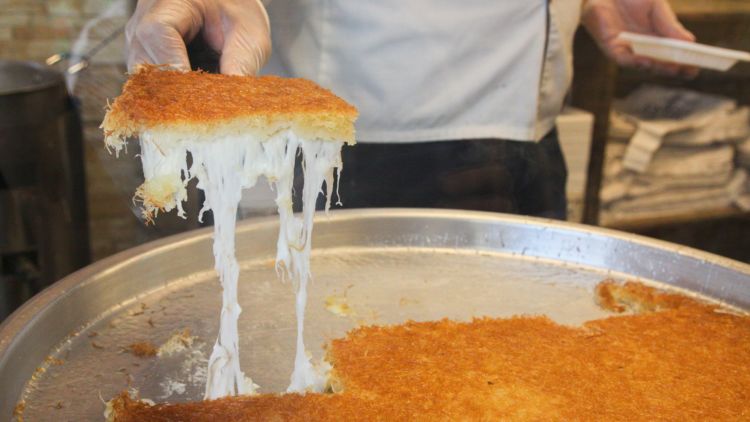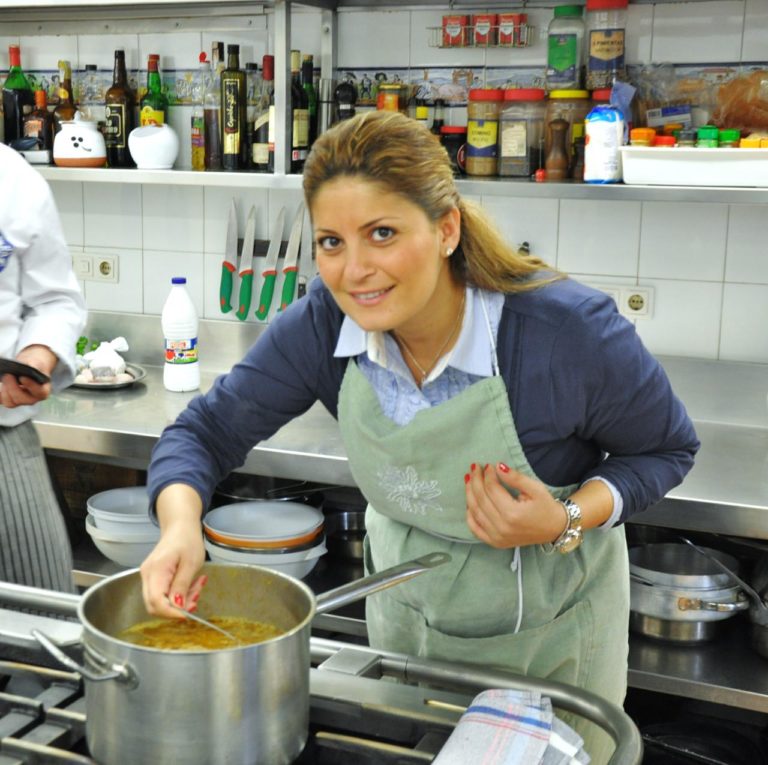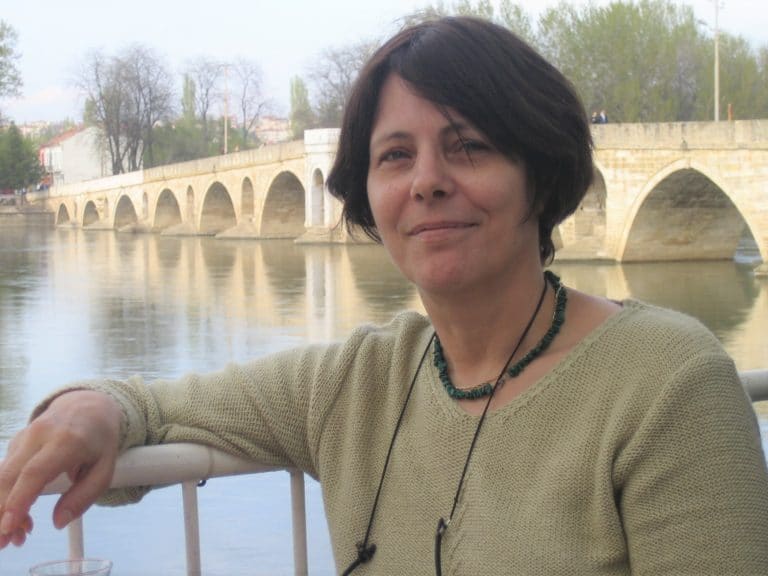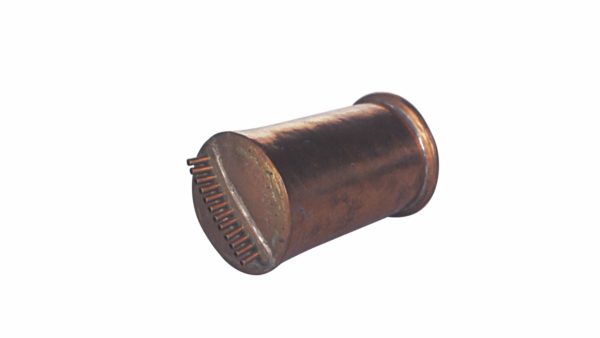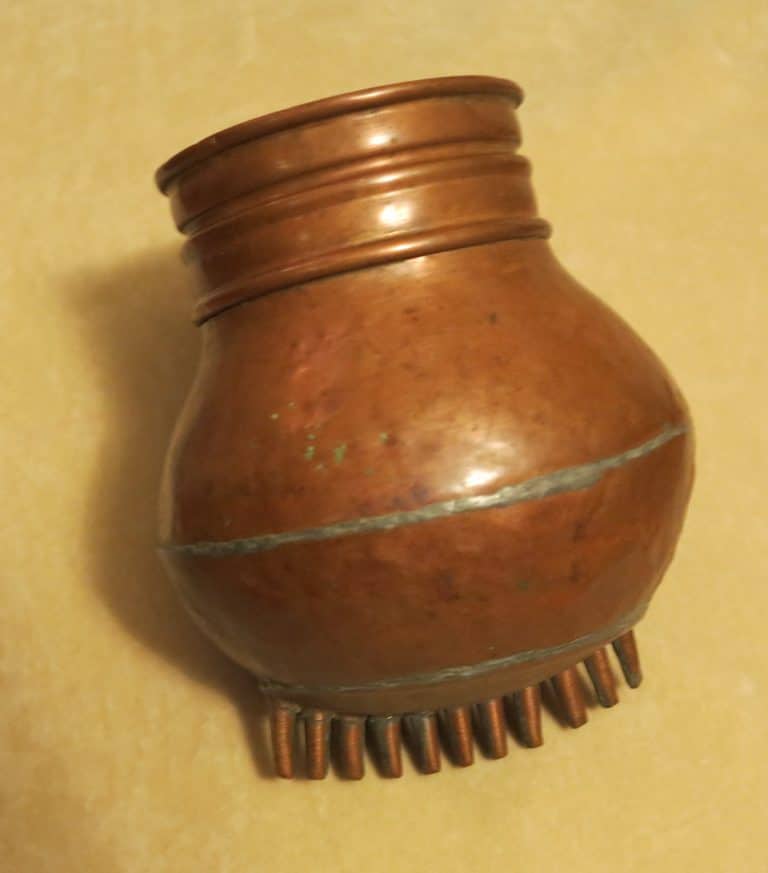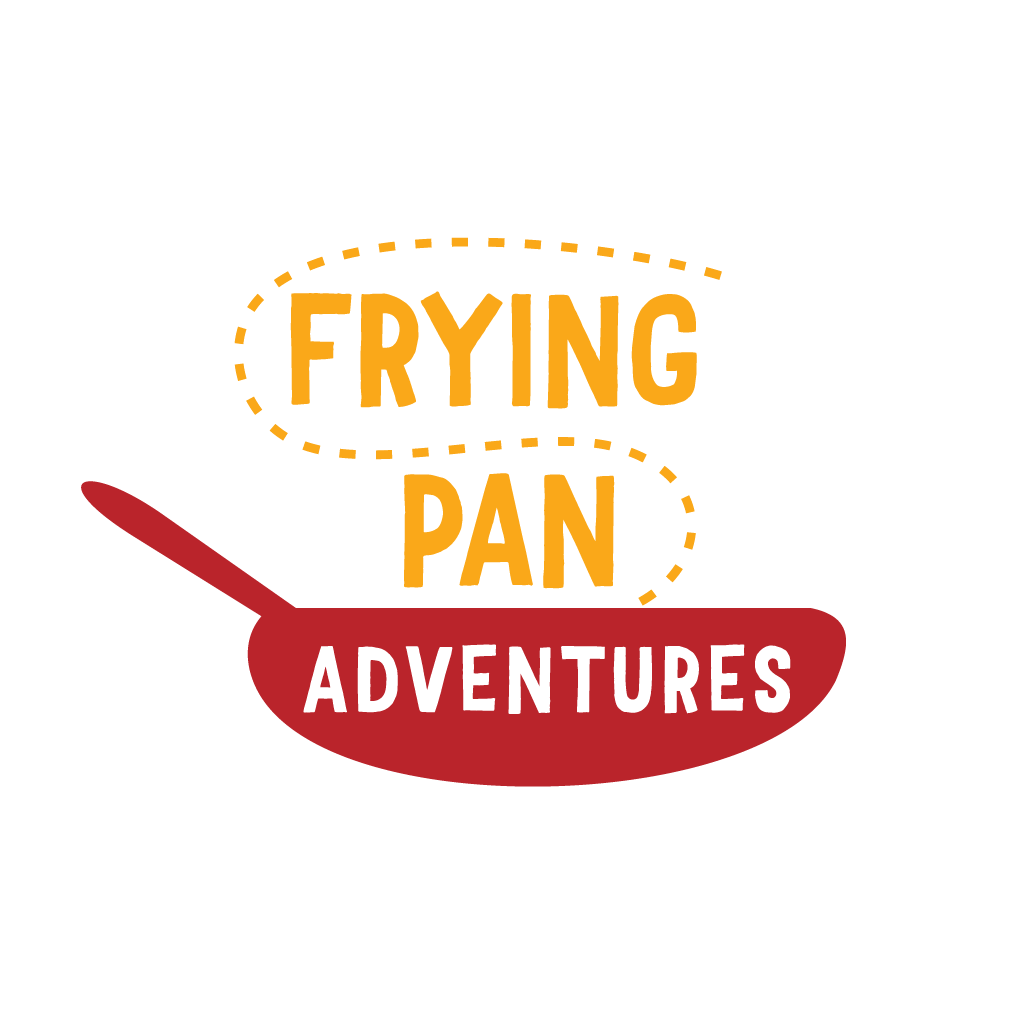Click the player below to tune in to our podcast episode on the Origins of Kunafa.
Kunafa, Knafeh, Kunefe. Regardless of how it’s pronounced, it usually refers to the syrupy cheese pie that is extremely popular across the region. We like to believe that we’ve found the best spot to have kunafa in Dubai at a Palestinian-Jordanian restaurant on our Middle Eastern Food Pilgrimage tour. But most Middle Eastern and Turkish restaurants in Dubai serve up some version of this hot gooey treat drenched in sugar syrup and topped with powdered pistachios. And it’s best paired with a bitter cup of coffee or unsweetened tea.
Our team loves the dessert so much that we decided to do some digging into who or which culture thought of this brilliant dessert first. We reached out to two food historians and cookbook authors, Dima Sharif and Mary Isin, to get to the medieval stories beneath the crust. Dima Sharif (@dimasharifonline) is the author of Plated Heirlooms, an encyclopaedic collection of Palestinian recipes. Mary Isin (@isinmary) has researched Ottoman cuisine extensively and published a number of articles and books, including the Bountiful Empire: A History of Ottoman Cuisine and Sherbet and Spice: The Complete Story of Turkish Sweets and Desserts.
Want more of our scrumptious podcast episodes? Feast on our main podcast page here!
Subscribe on: Apple Podcast App | Spotify (available on AppStore and Google Play) | Google Play Music (currently supported only for listeners in US/Canada) | Anghami
-
Dima Sharif, author of Plated Heirlooms -
Mary Isin, author of Bountiful Empire: A History of Ottoman Cuisine -
Old Turkish kataifi / kunafa noodle-making implement (70-80 years old). Source: Mary Isin -
Old Turkish kataifi / kunafa noodle-making implement (70-80 years old). Source: Mary Isin
Not a fan of audio? Here’s the show transcript for you to read!
Arva Ahmed [Host]: This show is brought to you by Dubai’s most gluttonous food tour company, Frying Pan Adventures, and you’re listening to Deep Fried.
Hey there, I’m your host Arva Ahmed. And thanks for joining me on the show that’s inspired by flavors of the East. This podcast celebrates the flavors that we as storytellers, content creators and food tour guides with Frying Pan Adventures have discovered in Dubai. And one of those flavors that we’ve discovered that never feels to tickle our taste buds is kunafa.
Now I’ve taken hundreds of guests over the past seven years on our Middle Eastern food tour and we try everything from falafels to baklava to Egyptian pies called feteer and…and just lots more. But after four hours of eating the dish that almost always gets voted as everyone’s favorite dish at the end of the tour is going to be kunafa. That, and the mind-blowing falafels that we featured at the start of the tour, but I’m going to save that for another episode.
Now, if you’re not familiar with kunafa, it’s quite simply a dessert pie and there are many variations across the Arabic restaurants in town. So there’s crunchy crust or soft, there’s cheese or clotted cream, the Egyptians even do versions with mango or banana. Now the most common one that you will find in Dubai is the cheese one.
It’s this round flat pie with gooey melted cheese on the bottom and a crust that’s usually made with crunchy kataifi noodles on top that have been splashed with this shocking orange color and the entire thing is drenched in heaps of sugar syrup. So it tastes pretty intense. And if it’s done right, even a person who doesn’t have a sweet tooth will find themselves just falling hopelessly in love with a slice of warm kunafa.
Now you can find kunafa everywhere in the city. It’s sort of become a part of Dubai, local dessert lingo. But we’re going to use this episode to cut through the crust, to get to the bottom of who actually came up with cheese kunafa. Which genius culture made it first. And because this is a subject that folks in the city take really seriously, we’re calling in the experts.
We’re going to be talking to two cookbook authors and food historians from two cultures that respect kunafa like religion, Palestine and Turkey. So for the first half of this episode, I’m joined by the lovely Dima Sharif who’s actually been on the podcast before during season one. She’s the author of a heartfelt encyclopedic collection of Palestinian recipes in a book called Plated Heirlooms.
She’s also the founder of an online company called Mooneh, LLC that delivers these flavor-packed artisanal products all over the city. But more than all of this, she has been such a wonderful friend. She’s like one of those fearless friends who’s very vocal about the quality and origins of food. She’s helped me as a food writer and tour guide because she’s actively documented the stories of Palestinian food.
And I can sense that today she’s going to have more than a few kunafa lessons for us up her sleeve. But just a small note before we get started. Dima’s dialing in from her office at Mooneh LLC. So please excuse any industrial hissing and culinary hacking in the background. This lady is just hard at work.
So with that, welcome back to the show Dima.
Dima Sharif: Hey, thank you for having me. I mean, with an introduction like this, I don’t know where to focus, whether the intro of food that made me hungry or that, you know, the very, very nice words you said, you know, I’m definitely craving kunafa now.
Arva: I just didn’t know how to do justice to both the dessert and you, so that means a lot. And I’m going to be really rude now Dima and do what I normally do when I send you messages, which is I’m just going to pick your brains for all the information that’s hoarded in there. Okay, so just tell us everything you know about kunafa. We’re going to cut all the small chat. I want you to dive right into it. Give us the background. How did this divine desert come to be?
Dima: My gosh, this is actually one of…like hummus and falafel and the likes. These are the very highly debated topics. For example, some people say it’s originated in the Ummayad’s period in Damascus and other people will say that it was the Fatimid period in Egypt.
And there is the theory of it actually coming from Turkey. I would say Turkey is the most unlikely. I would say that it’s most likely towards the end of the Umayyad dynasty and the beginning of the Abbasid era.
So one of the stories that is known is that it was Khalifa who was very hungry, especially during Ramadan. And he was always looking to his physicians for foods that will keep hunger away during the day, but also really satisfy his cravings and keep him full, especially after suhoor. Okay, but let me just take you a little bit back in food history. The reason why I’m telling you it is very unlikely that it’s Turkish is because kunafa, as a term, was first seen in the 13th century Kitab al Tabikh f’il Maghrib w’al Andalus, which is the book of cooking in Morocco and Andalusia. Of course, Morocco, we mean old Morocco. We’re talking about back in history. So that was in the 13th century Morocco and Andalusia book. And that was well before the Turks and the Arabs started properly mingling and well before the Ottoman empire had started spreading.
And at that time, this mention happened in Andalusia. Andalusia is all about the last emir of Ummayad dynasty who went to Andalusia and was there. So the theory becomes very likely. The reason why I will tell you that the Fatimid theory is also likely because it could have actually moved towards the Andalus from let’s say even if it was in Damascus from Damascus and to Egypt at some point. So the other factor is ingredient and ingredient here we’re talking about wheat. At that time wheat was the produce. Of course the whole region would produce wheat, but wheat grew like wild, like wildfire in areas like Damascus, Palestine, and you know the Levant.
Arva: Yes.
Dima: And also the fertile Crescent in general. And that’s why, again, I will tell you it is either, Baghdad, which is the Abbasids or the Ummayads in Damascus or Egypt. Cause that’s the fertile Crescent.
Also access to elaborate cooking methods because now when we talk about how it was created and how actually it was cooked, you’re looking at very elaborate royal courts, right? Because they were the people at that time who had access to griddles, access to iron and metal vessels that could handle very high heat. It could not have been done in pottery. It had to be iron and metal and here, access at that time to such materials was not in the average home.
It was actually in the courts, in the big kitchens, the big kitchens usually were the court’s kitchens. At that time, it was perhaps the beginning of what would have started forming the Ottoman empire, but they were not there yet. They were not established as huge royal courts plus there is a cultural reference.
Abbasid era and Ummayad era. These are known to be the golden Islamic age, right? At that time, there was a lot of, you know, a lot of interest and attention to culture, to food, to astronomy, to science, to expansion, to universality of all people and stuff like this. And there was a lot of exploration and so coming up with creative concepts and documenting these concepts was the thing known of that era. So it is very likely that it came there.
Now in Ibn Sayyar’s book, Kitab al Tabikh, which is the 10th century book, there was no mention of kunafa and reading through you will not find anything even similar in the prep of kunafa. Okay. That’s why I am personally very inclined towards the theory that says that an Abbasid Khalifa actually, not an Ummayad one, an Abbasid one, was very into culture, dance included, songs included, art included, and food actually comes within that. Right. And so it is said that he offered anybody who comes up with new food concepts never made before, never ever made before, their weight in gold. So it’s like a competition where people actually come up with recipes and go present them.
And if he likes it, that person who created that recipe will get his weight in gold. So, oh my God, if they’d still do that!
Arva: So you should test the recipe as many times as possible gain as much weight as you can. It makes so much sense that that’s how can kunafa was born. It has to be. I totally buy this theory.
Dima: So people were actually competing and not just kunafa because right after that incident, you’ll find a plethora of recipes like exploding everywhere. And because this was such a public event, because it was done in open markets and it’s done in front of people and it’s like a competition where the Khalifa is there, so there’s a lot of people who want to come and see the Khalifa and see these people. And let’s say somebody there in the market coming from India, let’s say, or from Greece. Or from China and they go back home by the time they reach home months later, that that story will have evolved and morphed. So there are parts that remain in history unless we find the original documents.
All right. And so that could have moved in all of these areas as to we have tried something that is absolutely fantastic and they want to recreate it. And when they recreate it, that’s where we get these regional differences. Where we say, for example, let’s say modern, the Turks will use kataifi where in Palestine, for example, no, you will make from semolina, you will make from scratch that dough, and even if you want to have the, you know, the tough one, the one that looks like angel hair, in traditional Palestinian, they will not use kataifi. They will make their own angel hair to use.
Now, before we go, 100% to modern, let’s see what kunafa was when it was first, first first mentioned. And the,n it first started off and I think it is a cut between the two. One is there is something called jubbaniyya, which is basically fried cheese that is usually covered with wheat and fried, and then honey is poured over it. And there you’ll see that the concept of kunafa, it wasn’t called kunafa, it was called jubbaniyya and it’s famous in Al Andalus and it actually comes from Tunisia originally. And then they will add on top of that rosewater. Isn’t that like almost kunafa to you?
Arva: That sounds delicious!
Dima: Alright. It moved into two things, katayef which is basically atayef, which we have in Ramadan. You know, the pancakes, the little dough ones,
Arva: The mini pancakes that you stuff with cheese or
Dima: Nuts
Arva: Nuts.
Dima: Yeah. Now that is one of the earliest doughs ever, and that was called katayef, still is called katayef, and from there comes the word kataifi cause it was in reference to one, those crepes but also in reference to the reconstructed batter. Reconstructed batter, you know things go stale. Back in the day, people didn’t waste it. So when something goes stale, they put it back in water. They rehydrate it sometimes, beat it until it resembles breadcrumbs and then they use it. They repurpose it again or they might fry it or they might just turn it into a powder again once it’s dry.
And this is the earliest kunafa by the name of kunafa, the earliest recorded recipe for kunafa, which is basically kadayef or katayef that, that crepe. Those crepes would after a while, if they want to become, you know, a big stale, they’ll break them up, put them with water and boil them extensively until it is almost no separation between the water and the thing. So it kind of goes into batter, but not completely. It still has texture. And in the meantime, the honey will be boiling. And the first earliest reference of use of cheese is that recipe as well. The cheese is quickly fried. They drop it in the oil and sieve it out like instantly and then drop it over the boiling dough, the katayef.
Arva: But that is a really complicated recipe. I think I just lost calories just hearing how they used to make it!
Dima: Oh well their lifestyle. At that time, he probably had to go get the wheat from the ground you know, not like us. It doesn’t come from supermarket on a click of a button, you know, and we’re just too lazy to go downstairs to pick it up from the driver.
Arva: I know.
Dima: [laughs] Well, anyway, and then once the cheese is added to that katayef, then the honey that’s been boiling is added to that. And once that’s added together, they leave it to boil for hours until it all thickens and come together, then they’ll add rosewater to it. And then once they remove it from the fire and leave it to cool a little bit so it all comes together. So when they cut it, it’s actually cuts together, the pastry, the cheese, the honey, it’s all together. And some, especially where the courts are involved because they wanted to be lavish and elaborate, they will sprinkle some nuts on top. And that’s mainly where the beginnings…
Arva: This by the way was fascinating. And the fact that you have gone down this entire rabbit hole of trying to figure out the story just makes me realize that you are an encyclopedia in and of itself. So talk to us now about the modern kunafa. Let’s fast forward to the future and what are we looking at now?
Dima: The modern kunafa, as we know it today, which became known everywhere as in the baked kunafa, this is actually Nablus. This is Nablus’ doing. It’s not the original kunafa in the broad term of kunafa as we have discussed, but it is the, let’s say, the ancestor of all modern kunafa, from which everybody decided how to do this.
Now what is the difference between Nabulsi kunafa, Egyptian kunafa, Turkish kunafa. Nabulsi kunafa, it’s the use of cheese that determines that difference. Okay. So, in Nablus it has to be Nabulsi cheese, and Nabulsi cheese here is very unique because Nabulsi cheese no matter what you do has a very distinct flavor. And that’s why when you eat Nabulsi cjeese, you will find that all the kunafas that you have tasted everywhere in the world are one and the same, but the Nabulsi cheese one is completely different, much more superior.
It’s actually the quality of the ingredients. Mozzarella cheese. We love it. It’s very good for pizza, but mozzarella is too mild and mellow to actually stand next to Nabulsi cheese. Then Akkawi cheese, while from the same region, one from Akka and one from Nablus, the Nabulsi cheese. Still the Nabulsi cheese, the way it’s done, the milks used and the way it is as a texture and the way it’s preserved with all the salt and how much you decide to sweeten makes the Nabulsi one extremely different and you know, way superior.
Arva: I find that Nabulsi cheese tends to be far more savory. Because of the goat and the sheep milk, right? So that’s the difference?
Dima: That’s actually for the preservation, right? So you know that the Nabulsi cheese is preserved in salt and then it’s put in brine, which is even more salt. Now how much salty or sweet you want is actually up to you, right? Here is the trick. Nabulsi halawanjis, or the people who create the pastries, pastry chefs of Nablus, they will actually…each one will have his own formula as to how salty it should be to create the perfect balance against the sugar.
Arva: But we don’t get Nabulsi cheese that easily. You’re supplying Nabulsi cheese, right Dima? One of the few places.
Dima: Yeah. And I actually supply the original one done the original way mixing both ewe and goat’s milk. What you find in the, in the market today is all cow’s milk, which is not Nabulsi cheese. Maybe it does follow the same steps of prep, but it’s not Nabulsi cheese, they call it that. That’s why I always tell people you have not tried Nabulsi cheese actually, until you’ve tried the one with a mixed milks, ewe and goat’s milk.
That’s the real cheese. You have to smell that animal when you’re eating that cheese and actually appreciate how privileged you are to have had access to some good resource like that, and you know, give the cows a break.
Arva: Dima as always, you’ve given me so much food for thought. This was so illuminating. Thank you for being our kunafa mentor today.
Dima: Thank you for having me. Always love chatting.
Arva: All right, we’re going to take a quick break to digest all of this information, and we’re going to give a shout out to our generous sponsors of Abela company. And after that, we’ll dive into can with an author and historian of Ottoman cuisine, Mary Isin.
<break>
Arva: And we’re back to the decadent episode of Deep Fried to talk about kunafa in the context of another culture that’s really serious about this dessert and that’s Turkey. Now I’m joined by someone who’s born in the UK but she’s been settled in Turkey since 1973. And she’s dialing in today from Istanbul.
Mary Isin has been researching and documenting Ottoman cuisine for the past 35 plus years. She’s published a vast range of academic papers and books, including the Bountiful Empire: A History of Ottoman Cuisine and Sherbet and Spice: The Complete Story of Turkish Sweets and Desserts.
So you can bet that we’ve got the right person on the line to get a serious slice of kunafa knowledge. Mary. It’s a real honor to have you on the show. Thank you for joining us.
Mary Işin: Thank you for having me.
Arva: Well, before we rewind back in time, let’s first talk about the present. So can you help us understand what a Turkish style kunafa is and how is it even pronounced? Cause I feel like the pronunciation is also going to be different than what we call it over here in Dubai.
Mary: Yes. In Turkish, they pronounce it kunefe.
Arva: Ku-nay-fay.
Mary: Yes. And it became very popular, uh, I’m not quite sure of the date, but maybe 10, 12 years. It’s been very popular in kebab houses as one of the puddings you get and there’s even now many shops, chains of kunefe-making places, you can see them everywhere now.
And so maybe that’s 5 years, 6 years they’ve had those. And they’re not all so good. Some of them are wonderful. Some of them are not..they’re not…because the cheese. Here today if you ask somebody in Turkey, what is kunefe, they mean the one with cheese in it. And it has to be that fresh cheese, which melts and becomes, you know, soft strings, that kind of cheese.
Of course it has to be the right cheese and not everywhere…I have tasted ones…they’re not the right kind of cheese, you know, it’s very important. And they put clotted cream on top as well, and it’s hot always. And they have special dishes, sort of shallow dishes, maybe a centimeter high and they are just enough for the kunefe.
So that’s how it is today.
Arva: You know, you’ve mentioned the right kind of cheese. What kind of cheese exactly are we talking about?
Mary: Fresh full fat cheese, which melts and produces that delicious stringy texture that that’s the right kind of cheese
Arva: And cow’s milk?
Mary: I suppose. All the ones you eat are probably yes, cheese made with cow’s milk. I wouldn’t think…I’ve never…or you could also use other kinds of milk. But I’m sure the ones we eat usually are cow’s milk.
Arva: That’s interesting because we had a conversation earlier in the show with Dima Sharif, and she was saying that the traditional kind of cheese that they use in Palestine is Nabulsi cheese, which is typically a mix of ewe and goat milk.
And that’s what they traditionally love. But it’s because the yield obviously is low, it’s an expensive kind of cheese not made as commonly as cow’s milk cheese. You tend to see the cow’s milk cheese much more around the world.
Mary: Yes. Well it depends of course, on the climate and what local animals you have. Maybe traditionally it would be a sheep and goat so it’s probably much more tasty. I would like to taste that!
Arva: It is actually really delicious, that cheese is fantastic. Now, is there a layer of noodles on the top and the bottom of the Turkish kunafa or…
Mary: Yes.
Arva: Okay. So that’s what, again makes a different than the more Levant…like the Palestinian, Lebanese ones that we see here because we have only one layer of noodles on the top and one of cheese on the bottom. It’s a 50, 50 almost.
Mary: That’s interesting. And it doesn’t stick to the bottom of the, of the tray, the little tray?
Arva: That’s a great question. So actually they flip it. They make it with the noodles on the base and the cheese on the top.
Mary: Yes.
Arva: And then everyone holds their breath as you do the flip and that’s how it’s done. So yeah, it’s only one layer of noodles.
Mary: I see. Yes. Yes, that’s very interesting.
Arva: So we spent a lot of time on the first half of the show talking about the origins of kunafa. And I know that in your work, you actually do suggest that the Ottomans probably got inspired by the medieval Arabs when it came to this dessert, which is also what our first speaker Dima Sharif from Palestine mentioned, but I want to go past the origin story.
Can you tell us about how the Ottomans might have adapted or added their own unique touches to this glorious dessert?
Mary: Yes, there was a tradition of flour, sweet flour puddings or cakes soaked in honey. That’s a very old tradition. Even the Romans had a version of bread pudding soaked in honey, but there was kadayef in the medieval Arab cuisine.
And that was a little round cakes made with quite a liquid batter poured onto a hot stone or a griddle. And kunefe was a flatbread. Kunefe meant flatbread, didn’t mean what it means today, kunafa. So there are some developments that show for interestingly, people were searching for something in little strips. I don’t know why. It’s just very strange. Why do people want to change from the flat cakes to little strips? So there is a kind of, I think, an early 13th century Arabic recipe, and you take your kunafa, which is a, was a flatbread and you cut it into thin strips and then you make your pudding. So that was number one.
And then in central Asia, there’s a Turkish recipe for something a bit like that in the 11th century. And you use the watery batter, like for kadayef, but you poured it into boiling oil, in little threads. Everybody was trying out methods. And then you come in, I think it’s the 13th…14th century, the recipe for something called mushabbak. I’m not sure if it’s still made, it’s called mushabbak. It’s a bit like, you know, jalebi, zu…
Arva: Zullabiya.
Mary: Zullabiya. It’s like that as far as I know, and you have a watery batter, again, the kadayef butter, maybe flour and water, and you dribble it into boiling oil. And that’s called mushabbak and different methods in different places, Central Asia back to, you know, the Middle East. It’s very interesting.
And for the mushabbak, you need to make little threads. It’s not easy by hand to pour it from, let’s say a spoon in little threads, so you really need a special implement. So in that mushabbak recipe from the 14th century, they’re using a coconut shell with a hole in the bottom. And your boiling butter or your boiling oil, and you’re moving that coconut shell and it’s dribbling in and you’re making little sorts of circle things, a bit like zullabiya. So that’s another development.
And what happened in Turkey was that they combined these ideas with the traditional way of making kadayef, which were these little round cakes or batter that you poured onto a hot stone or onto a griddle, a metal griddle.
And they took that batter and they took the implement with holes in it, but instead of pouring it into boiling oil, they poured it onto the hot stone. And there is a 15th century recipe Turkish recipe for that, but it’s just called another kind of kadayef but you can see that it’s influenced by it.
Different experiments in different places, but this is the first that we can call, as we know kunafa today, that recipe. And he uses a ladle with holes in it, not a coconut, but a ladle with holes in it. And that became so popular Turkey that the other kind, the ancient kind of kadayef, which goes back to the 10th century in Arab cuisine, that became something people liked, but they weren’t that bothered about it. So the real kadayef became, if you read an Ottoman text and it says kadayef, it’s always the kind in the threads like kunafa. Always. And the other kind became known as Arab kadayef or flat kadayef. Because if you say kadayef, you meant the kind in the threads, you meant kunafa.
When we look at some recipes from the 18th century, but no cheese, it’s always nuts, pistachio nuts or almonds, and they made it in different shapes, you know, rolling it up, making it into little sorts of balls, different kinds. But no cheese. So, ah and then there are some 19th, late 19th century Turkish recipe for Arab Damascus-style kunafa, but it’s called kadefe. I don’t know how, but it means kunafa. Anyway, and there they crush it into tiny pieces and then bake it in oil and then bake it in an oven, I think. Or they fry it and then make the pudding. Anyway so there’s all these different threads and connections.
And the cheese, where does the cheese come from? I wondered about the cheese because it doesn’t appear in history, the cheese filling.
And what I think is that in the 18th century in Turkey, there was an idea that you could fill baklava with different things, mainly nuts. But some people liked it with cream, but you don’t get clotted cream. Nowadays you can but in the old times, you didn’t get clotted cream all year round. It’s something that is a seasonal thing because the animals don’t produce much milk in the winter.
So they started making substitutes for the clotted cream. And one of them was fresh cheese in baklava. This is baklava. So my idea is, but who knows, that the idea of making kunafa and eating it hot because if it’s got cheese, you have to eat it hot because the cheese goes hard like leather… so I think perhaps the baklava with cheese, with fresh cheese, was transferred to the kunafa with cheese.
Arva: I like that theory.
Mary: Yes, because there isn’t any other way of explaining how. And it became very popular because baklava with cheese is for some strange reason, it was very popular, it was made in a lot of places, now everybody forgot it. And they only make it in three cities in Turkey today. And it’s not something anybody else knows. They themselves, the people who live there in Urfa, it’s very popular. Ladies make it at home for their visitors when they come to have coffee with them, they serve that. And in two other places it’s traditional, but it’s not well known. But kunafa with cheese made such a big thing, perhaps it was the commercial aspect.
Maybe the commercial aspect made it popular and they’re both eaten hot of course. So that’s my, that’s my contribution. There’s another thing about the cheese that’s in, I don’t know about the Middle East, but in Turkey, there is a very long tradition of sweets with cheese in, with fresh cheese in. And, I have, I know a professor, he’s a historian, he’s collecting recipes. He collected 150 recipes so far for sweets made with cheese. So it’s a big tradition here. And I think the Romans also had a, a kind of donut with cheese in the recipe. So it’s a kind of a long tradition, but you know more about the Middle Eastern end. So in Palestine or Jordan, I don’t know of Damascus or
Arva: I think dough and cheese and sugar syrup, that’s just a match made in heaven. But to your point, for some reason, kunafa has just, it’s taken the center stage. And so it’s just interesting and we never know really what the original original story is, but I am so glad that someone came up with the final result that we have today cause it just works.
Mary: Yeah, it does. Yeah. It’s very, very nice. I like it too. I’m just sorry that the baklava hasn’t done the same because it would be very interesting to have both made with cheese, but nobody seems to be doing that.
Arva: I agree, a hundred percent. You said baklava with cheese and I was on board. I’m on that boat with you. I’m ready to go there.
Mary: Yeah, they’re both…just like kunafa is nice with the fresh cheese, so is the baklava too. It’s…I think it’s a shame somebody doesn’t use the same technique.
Arva: Well..
Mary: Ah!
Arva: No. Sorry, go ahead.
Mary: No, I was just going to say before, I forgot to show you. I was going to show you some kunafa pots that I have in my kitchen collection. Um, I don’t think they’re more than maybe 70, 80 years old actually, but they’re interesting.
And they still use them by hand in some parts of Turkey. You can get modern ones as well.
Arva: Wow Mary that’s incredible! Oh my goodness! Okay. So that’s the one with the perforations at the bottom, which you would use to make the noodles?
Mary: Yes. Well, they’re little pipes actually. So from the, from the holes they developed this little pipe idea and this one is old. It has two missing actually. So you filled it, you, so you…they make it like a half, a little bit curved. So you put your hand under it to stop it, flowing out. You fill it. And then when you’ve got your hot griddle ready or huge round hot griddle, then you let go and you make…
Arva: So, so hold up, we’re going to have to share a photo of this for people who are obviously only listening in. But let me just describe this again. So it looks like a tumbler almost. Is it made out of copper?
Mary: It’s made out of copper. Yeah.
Arva: Okay. So it looks like it’s a copper tumbler and at the bottom are, for lack of a better word, it looks like almost little udders. Okay. So they’re these little tubes coming out of the base and you would just fill your batter up into the tumbler and then you’ll have these thin strings of liquid dough coming out onto the hot griddle and it will cook up as noodles.
Interestingly, that is actually still used today. I have seen instruments, very similar to that. And in factories, they have this set up in an automated way. So they have these massive funnels with the perforations, making the noodles in a mechanized manner. But that’s amazing. How old is that?
Mary: The ones I have, I think they’re sort of 60, 70, 80 years old. I don’t think they’re very, but you don’t know because with, with copper doesn’t spoil so they could be older, but this is the traditional kind and this is another one. It’s a different shape. I have quite a lot. This is a bit different shaped, and this is more…then I have one, you know, before you described the completely mechanized one and they have a system, I heard it used it’s used in Egypt. I’m sure it’s used in the Middle East countries too. And it was used here and this is a more mechanized version and you hung it from a pole. Okay. And I also have another, but it was like, it was too heavy to get down. It had a mechanism to shut off the pipes and you hang it from a pole and the bottom, they turn the the griddle underneath it. So this is like the medium, the middle way between doing it completely by hand and then having a pole and doing it in larger quantities. So this is like the ones that they began to make more quantities, more commercial.
Arva: It’s larger than the other ones definitely. It’s like a bucket.
Mary: Yes. And they had a sort of a mechanism to hold, which would shut off the pipes instead of putting your hands on it. So it gradually, you can see how it gradually became today’s completely mechanized process, but many people still make it by hand today here too.
Arva: Wow. This is so fascinating. I know before we started recording, you mentioned, “Hey, I don’t know how much I have to talk about kunafa, but you are a font of knowledge.”
I’m telling you now we’re going to beg you to come back on the show because there’s so much more we have to speak about with you. Thank you for sharing your incredible knowledge with us.
Mary: Thank you for having me Arva.
Arva: And for those of you who tuned in because you felt like we’d share the best spots to have kunafa in the city, well, here are my top recommendations. My personal favorite is Qwaider Al Nabulsi. It’s this Palestinian Jordanian restaurant in Deira, and it’s got that slightly salty kick to its kunafa that Dima was talking about. And then there’s the old time favorite Firas Sweets? I actually think there are two different brands operating under that same name, but the one I’ve tried on Dhiyafah road and then there’s another one that I’ve tried at a Firas on Tawoon street in Sharjah, both of those were pretty good as well.
So that’s it for the sweet episode, a big thank you to the two lovely authors who joined us. Dima Sharif, the author of Plated Heirlooms and Mary Isin, the author of Bountiful Empire: A History of Ottoman Cuisine. We’ve shared their Instagram handles and links to their books in our show notes so make sure you check that out.
Hey, if you have a kunafa spot that you love or you just want to keep the kunafa conversation going, just head on over to social and connect with us at @fryingpanadventures on Instagram and Facebook and @fryingpantours on Twitter.
And if you enjoyed the show, please rate, review and share it with whoever you know loves their kunafa.

Arva Ahmed is the co-founder of Frying Pan Adventures, Dubai’s first food tour company, and a celebrated food explorer known for uncovering Dubai’s hidden culinary gems. Her expertise in the city’s diverse food scene has been featured in prominent publications such as CNN, Khaleej Times, BBC Travel, The Sun, The Independent and countless more. She also hosts Ditch the Silver on YouTube. Through her immersive tours and storytelling, Arva brings Dubai’s rich flavors and vibrant cultures to life.

